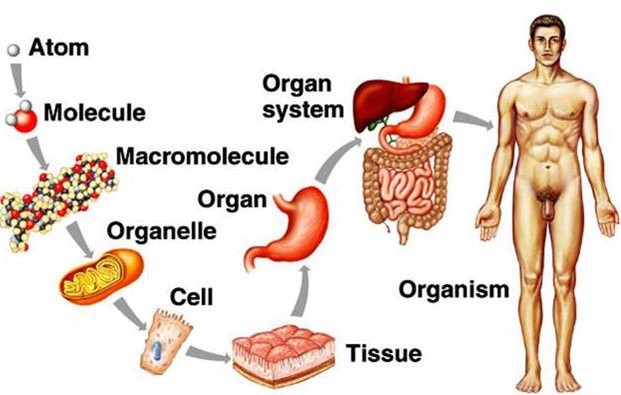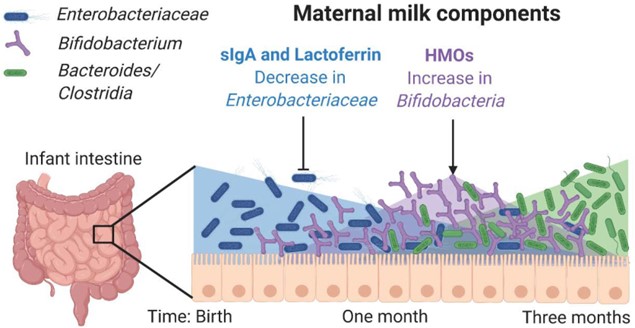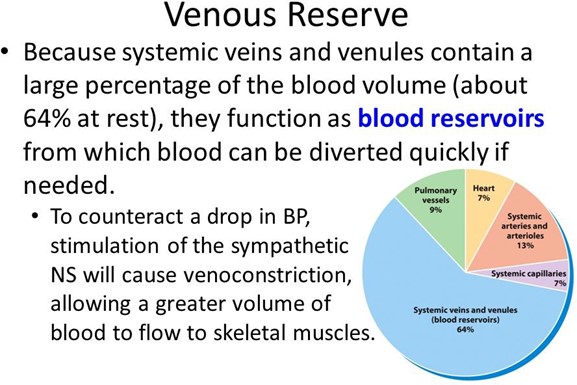Which of the following lists best illustrates the idea of increasing levels of complexity?
Organs, organelles, organ systems, cells, tissues.
Cells, tissues, organelles, organs, organ systems.
Organelles, cells, tissues, organs, organ systems.
Tissues, cells, organs, organelles, organ systems.
The Correct Answer is C

This list best illustrates the idea of increasing levels of complexity because it follows the biological hierarchy of organization from the simplest to the most complex units of matter.
Each level is composed of units from the previous level and has emergent properties that are not present in the lower levels.
Choice A is wrong because it reverses the order of organelles and cells. Organelles are subcellular structures that perform specific functions within cells.
Cells are the basic units of life that can carry out all the processes of living organisms.
Choice B is wrong because it reverses the order of tissues and organelles. Tissues are groups of similar cells that work together to perform a common function. Organelles are more basic than tissues and are found within cells.
Choice D is wrong because it reverses the order of organs and organelles.
Organs are structures composed of two or more types of tissues that perform a specific function or function.
Organelles are more basic than organs and are found within cells.
Nursing Test Bank
Naxlex Comprehensive Predictor Exams
Related Questions
Correct Answer is C
Explanation

A newborn is protected against certain digestive and respiratory infections by IgA received via the mother’s milk.
IgA is the main antibody found in breast milk, and it coats and seals the baby’s respiratory and intestinal tract to prevent germs from entering the body and bloodstream.
Choice A is wrong because the blood does not contain IgA, which is the main antibody that protects mucosal membranes.
Choice B is wrong because the placenta does not transfer IgA to the fetus, but only some other antibodies such as IgG.
Choice D is wrong because the intestine does not produce IgA in newborns, as they are born with low levels of IgA.
Correct Answer is B
Explanation
Veins are the type of blood vessel that holds the greatest volume of blood and serve as reservoirs for blood.

According to 1, veins contain about 70-80% of the blood volume in circulation.
Veins are also called capacitance vessels because they can expand and store more blood when needed.
Choice A. Capillary is wrong because capillaries are very thin and narrow vessels that allow the exchange of gases and nutrients between the blood and the tissues.
Capillaries have a very small volume compared to veins.
Choice C. Arteriole is wrong because arterioles are small branches of arteries that regulate blood pressure and blood flow to the capillaries.
Arterioles have a higher resistance and lower volume than veins.
Choice D. Artery is wrong because arteries are thick and muscular vessels that carry oxygen-rich blood away from the heart to the rest of the body.
Arteries have a higher pressure and lower volume than veins.
Normal ranges for blood volume vary depending on age, sex, weight, and health status, but generally range from 4 to 6 liters for adults.
Whether you are a student looking to ace your exams or a practicing nurse seeking to enhance your expertise , our nursing education contents will empower you with the confidence and competence to make a difference in the lives of patients and become a respected leader in the healthcare field.
Visit Naxlex, invest in your future and unlock endless possibilities with our unparalleled nursing education contents today
Report Wrong Answer on the Current Question
Do you disagree with the answer? If yes, what is your expected answer? Explain.
Kindly be descriptive with the issue you are facing.
